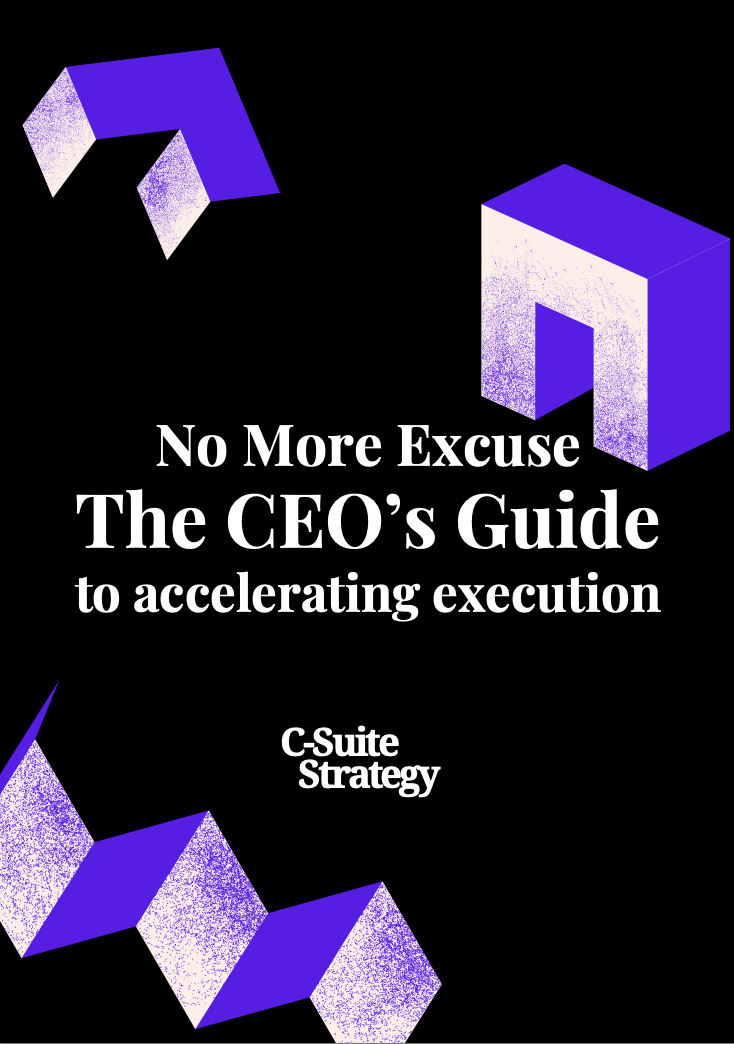
Understanding the Vision
Crafting a Vision That Resonates
For any CEO, understanding the vision of their company is paramount. It serves as the guiding star for decision making and helps align the goals of the organization with its long-term aspirations. A clear vision not only inspires employees but also sets the tone for the company culture. It’s essential for CEOs to frequently revisit and refine this vision to ensure it remains relevant in a rapidly changing business environment.
Questions CEOs might consider include:
- How does our vision reflect the core values of our company?
- Are we effectively communicating this vision to all levels of our organization?
- Does our vision align with the current market trends and customer needs?
Engaging with employees and stakeholders can provide valuable insights into how the vision is perceived and implemented. This understanding can help employees feel more connected to the company's goals, enhancing overall employee engagement and productivity.
For a deeper dive into crafting a strategic agenda that aligns with your vision, consider exploring strategic leadership insights.
Assessing Market Position
Benchmarking and Competitive Analysis
For any CEO, understanding the market position is a crucial undertaking that helps to gauge where the company stands relative to competitors. Through careful competitive analysis and benchmarking, leaders can identify pivotal shifts needed to maintain a strategic edge. The key lies in asking the right questions that unravel insights into the company's current standing versus its aspirational goals.- How well do we understand our competitors? Being aware of competitors' strategies, strengths, and weaknesses empowers CEOs to make informed decisions to enhance the company's market standing.
- What are our competitive advantages? Identify strengths that set your company apart, leverage them to differentiate your offerings, and capitalize on market opportunities.
- Are we listening to our customers? Tune into customer feedback and market trends. Addressing customer needs can inform your approach to innovation and product development, vital to staying competitive.
Assessing Market Opportunities
Analyzing market opportunities involves a delicate balance of embracing change while maintaining the core company values. Digital transformation has revolutionized how businesses operate, offering an array of new opportunities. Here's how CEOs can navigate this dynamic landscape:- Are we ready for digital transformation? Evaluate the organization's readiness to adopt digital changes and ensure that the culture supports innovative technologies that help employees work efficiently.
- How agile is our team? Agility is critical for quickly adapting to new market trends. A responsive team can help the organization pivot and seize opportunities more effectively.
- Which emerging markets align with our goals? Identification of untapped markets that resonate with your company's objectives to drive long-term success.
Driving Innovation
Innovative Thinking and Strategic Implementation
Driving innovation is where visionary ideas transform into tangible outcomes, pushing your organization towards long-term success. An effective approach to foster innovation begins with engaging the entire company — from employees to the upper echelons of leadership. To cultivate a culture of innovation, CEOs must pose the right questions that challenge existing paradigms and inspire creative problem-solving. Questions that not only envision what the company could become but also resonate with employees' goals are crucial. Encouraging open dialogue within teams can help uncover unique insights and drive forward initiatives that align with your company's mission. Innovation thrives in an environment where risk-taking is encouraged. Yet, a strategic approach is essential to ensure company stability. Consider integrating digital transformation company names into your operations as an illustrative example. This not only modernizes processes but also keeps the company competitive within its market space. To achieve the best outcomes, align innovative strategies with the company's vision and values. Ensure that your leadership style supports and facilitates creativity. By understanding your team's dynamics and leveraging their strengths, you can help employees better understand company objectives, leading to greater engagement and shared success. In essence, innovation is not solely the responsibility of a few. When the entire organization becomes part of the innovative process, it naturally becomes embedded within your company culture, promoting growth and aligning with long-term goals.Resource Allocation
Aligning Resources with Strategic Priorities
For CEOs, resource allocation is a cornerstone of driving the company toward its strategic goals. A strategic approach to allocating resources ensures the organization remains agile, competitive, and aligned with its vision. Effective resource allocation begins with a clear understanding of the company's vision and strategic priorities. This understanding helps identify which areas require greater resources and which ones might need scaling back. Questions arise about how resources align with the company's vision and goals, challenging the CEO to make tough yet necessary decisions.- Company Culture Alignment: It is essential to ensure that resource allocation aligns with the company culture. By doing so, it becomes easier to motivate employees and nurture a productive environment. A CEO needs to frequently ask, "Does our resource distribution reflect our organizational values and culture?"
- Driving Innovation through Resources: Innovation often hinges on providing the right resources to the right teams. Whether focusing on digital transformation or product innovation, a CEO can drive long-term success by channeling funds and efforts toward areas that promise the greatest potential for growth.
- Addressing Employee Engagement: Engaged employees are likely to be more productive and aligned with the company’s goals. CEOs should ponder whether the current allocation strategy meets employee needs and enhances engagement across all levels of the organization.
- Balancing Immediate and Long-Term Needs: While addressing short-term needs is crucial, foresight is essential for sustainable success. CEOs must balance essential immediate resources with investments that ensure long-term growth and sustainability.
Risk Management
Evaluating Corporate Vulnerabilities and Opportunities
In the ever-evolving landscape of business strategy, one fundamental element that a CEO must prioritize is the art of risk management. Understanding both internal and external risks is crucial to safeguarding the company's long-term objectives. While driving innovation and resource allocation play vital roles in navigating the competitive field, anticipating potential challenges ensures that strategic plans remain robust under various scenarios.
Risk management involves more than simply identifying potential pitfalls—it requires a deep dive into the organization’s culture and the ways it harnesses intrinsic strengths to foster resilience. A CEO's approach should include probing questions that encourage both leadership and employees to identify vulnerabilities that could compromise company values.
To enhance the decision-making process, it's beneficial to engage the team in regular discussions around topics such as:
- What are the biggest challenges facing the company today that could impact our strategic goals?
- How aligned are our current risk management protocols with the overall business strategy?
- What steps can be taken to increase employee engagement in identifying and mitigating risks?
- How is digital transformation shaping the risk landscape within our industry?
Ensuring that risk management strategies are embedded within the company's culture will help employees feel part of the solution, contributing to their empowerment and engagement. By fostering an environment where employees at all levels understand the significance of their roles in mitigating risks, a CEO ensures that the organization is not only prepared for unforeseen circumstances but is also poised for sustainable success.
Measuring Success
Evaluating Outcomes: A Balanced Perspective
As a CEO, understanding and measuring success within your company involves more than just examining financial metrics. It's about delving deep into how well the company's strategic initiatives align with overall goals and vision. A well-rounded approach to evaluating outcomes will often shed light not only on what was achieved but also on how it was achieved. One important aspect of measuring success is considering both short and long-term impacts. This involves asking yourself whether short-term gains may be sacrificing long-term sustainability. Balancing the inevitable trade-offs is key, as is ensuring that the company's current trajectory is in line with its long-term goals. Another element to consider is the alignment between company culture and strategic outcomes. Company values should be evident in every achievement, and an engaged workforce should feel motivated by the direction and results of strategic efforts. By prioritizing employee engagement, CEOs can foster a culture of excellence that naturally aligns with company goals, leading to sustainable results. Important questions CEOs should ask themselves and their teams include:- How do our achievements align with the company's vision and strategic goals?
- Do these outcomes influence the company's market position?
- Are we seeing a healthy return on our innovation initiatives?
- How effectively are resources being allocated to support our goals?
- Is risk being managed in a way that supports both short and long-term success?














